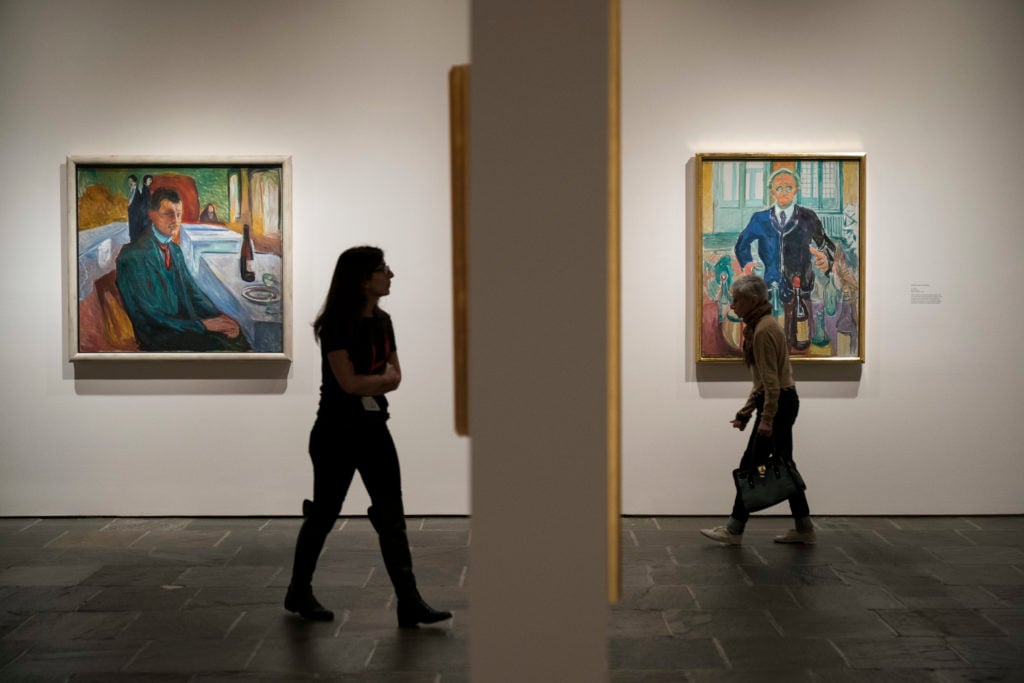Analysis
An Estimated 85 Percent of Artists Represented in US Museum Collections Are White, a New Study Claims
A new study examined thousands of artists across 18 museums.

A new study examined thousands of artists across 18 museums.

Eileen Kinsella

In recent years, museums across the United States have worked to diversify their collections, sometimes even selling work by white male artists to buy art by women and artists of color.
But according to a new study, they still have a lot of work to do.
Researchers examined more than 40,000 artworks in the collections of 18 museums across the US, including the Metropolitan Museum of Art in New York, the Detroit Institute of Arts, and the Art Institute of Chicago, to analyze the gender and ethnic diversity of their holdings. They estimate that 85 percent of artists represented in these collections are white and 87 percent are men. (This is, notably, significantly out of step with the US population at large, which is 61 percent white and 50.2 percent male, according to census data.)
“We’re aware of the important conversations about diversity and inclusion in the art world that have been happening for decades and have been highlighted by the Guerilla Girls since 1985,” Chad Topaz, one of the study’s authors, who is a mathematics professor at Williams College, told artnet News via email. “More recently, we’ve noted the deaccessioning of works in museums in order to diversify collections, as happened in Baltimore, and we’ve read informative and thought-provoking writing on gender and ethnicity in art by Aruna D’Souza and others. Our own work strives to provide some empirical data in order to contribute to the national and international dialogue taking place.”
The 15-page study, which is scheduled to be published soon on the nonprofit Public Library of Science website (PLOS), is not bulletproof, but it does provide a worthwhile starting place in a sector where demographic data is hard to come by. The project was led by three math and statistic experts and three art and art history experts, most from Williams College in Massachusetts. (One was from New College of Florida in Sarasota and another from Macalester College in Minnesota.)
To estimate the demographic breakdown of artists in the museums’ collections, the study’s authors “scraped” the public online collections of 18 major US museums, retaining the museum name, artist name, and a web link pointing to the artist’s entry in the collection. Next, they deployed a large random subset of scraped records to a crowdsourcing platform known as Amazon Mechanical Turk (MTurk) and asked workers to research the demographics of each sampled artist. (Our columnist Tim Schneider explored the dark side of employing Turks in his most recent Gray Market column.) Researchers say their methods could be applied to measuring diversity in other fields as well.
The study examines the following institutions: the Detroit Institute of Arts; the Metropolitan Museum of Art, New York; the Museum of Fine Arts, Boston; the National Gallery of Art in Washington, DC; the Philadelphia Museum of Art; the Art Institute of Chicago; the Nelson-Atkins Museum of Art; the Museum of Art at the Rhode Island School of Design; Yale University Art Gallery; the Dallas Museum of Art; the Denver Art Museum; the High Museum of Art in Atlanta; the Los Angeles County Museum of Art; the Museum of Fine Art, Houston; the Museum of Contemporary Art, Los Angeles; the Museum of Modern Art, New York; the San Francisco Museum of Modern Art; and the Whitney Museum, New York.
The study also identified which museums were outliers—in other words, which ones had a significantly higher or lower representation of certain demographic groups than the rest of the pool. Researchers found that the Detroit Institute of Arts (DIA), the Met, and MFA Boston have “a significantly lower proportion of women”—all below eight percent. Leaders in the sample were LA MOCA (which had 24.9 percent), SFMOMA (18.1 percent), and the Whitney (22 percent).
With respect to the proportion of Asian artists, the DIA, the National Gallery of Art, the Dallas Museum, the High Museum, the MFA Houston and the Whitney Museum are all low, while the MFA Boston, Yale, RISD, and LACMA rank relatively high. Researchers found that no museums ranked significantly lower than the others in their representation of African American artists, although the High Museum stands out with relatively high representation, at 10.6 percent. (In our own study, completed with In Other Words last year, we found that just 2.4 percent of acquisitions and gifts over the past 10 years to 30 US museums were of work by African American artists.) The only outliers for representation of Hispanic/Latinx artists came in on the high end, led by the Denver Art Museum (5.4 percent) and the LA MOCA (6.4 percent).
Notably, researchers found “a very weak association” between a collection’s mission and diversity, which they suggest might mean that “a museum wishing to increase diversity in its collection might do so without changing the geographic and/or temporal emphases of its mission.”